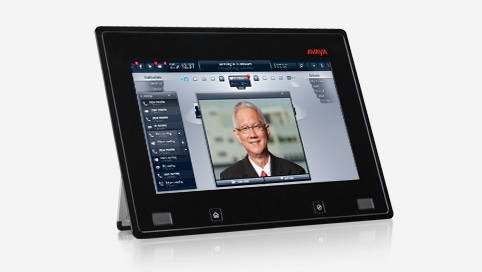Here comes another tablet computer. But it isn't from a PC vendor... Avaya has raised the bar on portable unified communications systems with the release of the Avaya Flare Experience (pictured), a UC solution delivered via a touch-screen tablet device.
September 16, 2010


Avaya Flare
Here comes another tablet computer. But it isn’t from a PC vendor… Avaya has raised the bar on portable unified communications systems with the release of the Avaya Flare Experience (pictured), a UC solution delivered via a touch-screen tablet device.Although not first to market – Cisco introduced its tablet-based Cius unified communications tablet at its Cisco Live event in June 2010 – Flare takes the idea of collaboration at the touch of a finger further than pressing a button. Flare’s touch-screen interface enables users to initiate videoconferences and audioconferences by dragging-and-dropping contacts into a ‘spotlight’ while also being able to use UC tools simultaneously. And the device enables multiple sessions via multiple spotlights, so users can put certain members of a conference on hold or speak to them privately in a different spotlight while the original conference is going on.
Like Cius, Flare is delivered via a desktop tablet device featuring an 11.6-inch screen, a camera, native video and Harman Kardon speakers. The Avaya Desktop Video Device is fully portable, so users can carry it around for mobile collaboration or use it at their desks with an optional base station. Also like Cius, it runs on the Android operating system, so users can download any mobile app available from the Android app marketplace.
In addition to supporting SIP, Wi-Fi and Bluetooth, the tablet features a VPN gateway, USB port, HDMI connection for monitors and a three-hour-plus battery life. Future versions will have VPN software built in.
The technology running the Avaya Flare Experience integrates with Avaya’s Aura communications platform, which the company debuted last year and which the company says eliminates the need for overlay networks and enables common user profiles, single voice and video dial-plans, bandwidth management and QoS assurance mechanisms.
Similar But Different?
Cius and Flare both address the issue of having the convenience of unified communications in a mobile environment. Flare, however, has the potential to replace the desktop IP phone and run in any SIP environment. Users can communicate in any mode or channel, check messages, schedule meetings and appointments, receive alerts or reminders with Flare. Its only downside is a relatively short battery life – about three hours vs. Cius’ eight hours.
With Flare, Avaya is also making its debut into the SIP-enabled videoconferencing space. Its previous videoconferencing efforts have been in the H.323 space, but Avaya believes the marketplace is in the midst of a massive shift to SIP due to a growing interest in adding video to the UC experience and the need to make video more cost-effective, among other reasons.
The company is probably right, and from the looks of things, Avaya has taken the right first step.
Sign up for The VAR Guy’s Weekly Newsletter; Webcasts and Resource Center; and via RSS; Facebook; Identi.ca; Twitter and VARtweet.
About the Author(s)
You May Also Like


